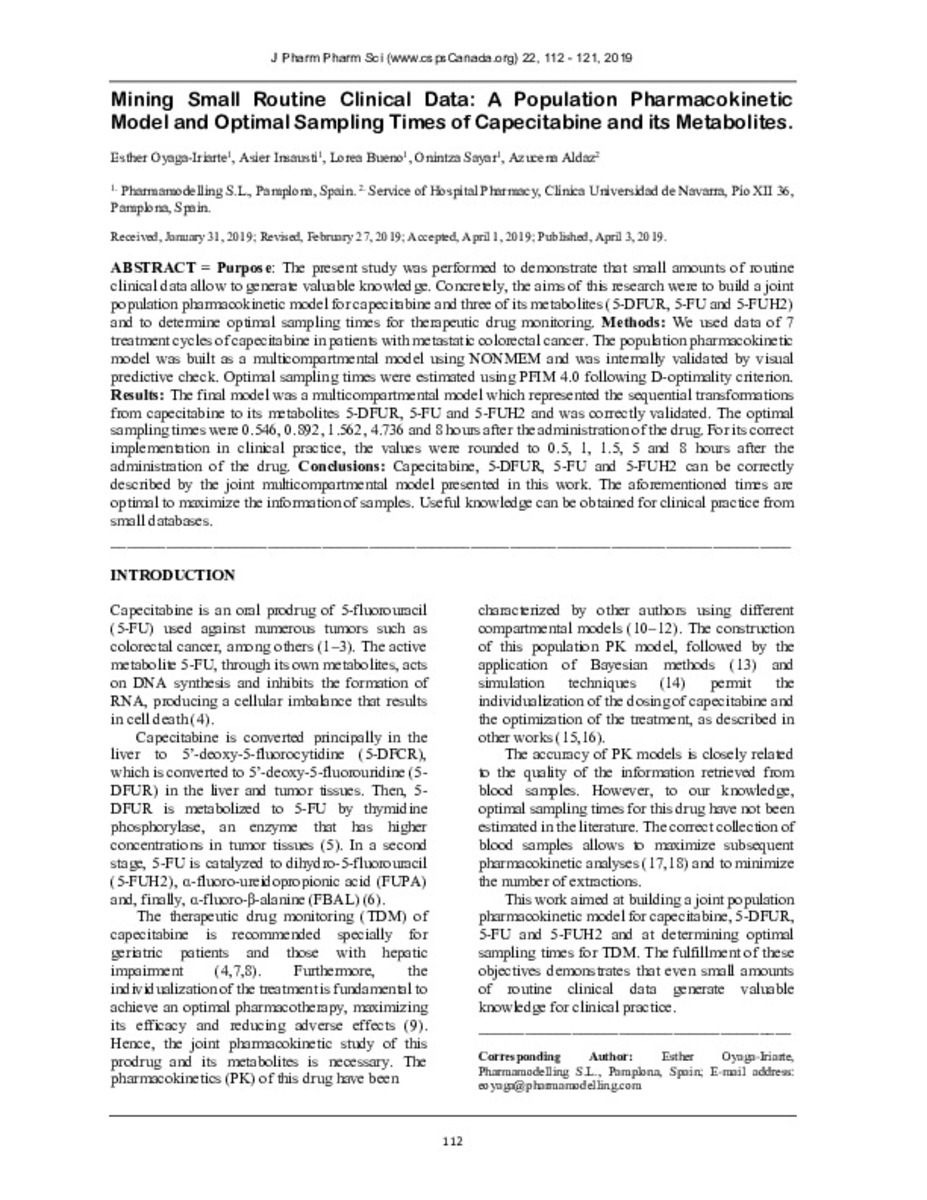Mining Small Routine Clinical Data: A Population Pharmacokinetic Model and Optimal Sampling Times of Capecitabine and its Metabolites
Palabras clave :
Materias Investigacion::Ciencias de la Salud::Química médica
Therapeutic drug monitoring
Capecitabine
Metabolites
Pharmacokinetic model
Fecha de publicación :
2019
Editorial :
University of Alberta Libraries
Nota:
This is an open access journal with free of charge submission and non-commercial download. At the time of submission, authors will be asked to transfer the copyright to the accepted article to the Journal of Pharmacy and Pharmaceutical Sciences. The author may purchase the copyright for $500 upon which he/she will have the exclusive copyright to the article. Nevertheless, acceptance of a manuscript for publication in the Journal is with the authors' approval of the terms and conditions of the Creative Commons copyright license Creative Common license (Attribution-ShareAlike) License for non-commercial uses.
Cita:
Oyaga-Iriarte, E. (Esther); Insausti, A. (Asier); Bueno, L. (Lorea); et al. "Mining Small Routine Clinical Data: A Population Pharmacokinetic Model and Optimal Sampling Times of Capecitabine and its Metabolites". Journal of Pharmacy & Pharmaceutical Sciences. 22, 2019, 112 - 121
Aparece en las colecciones:
Estadísticas e impacto
0 citas en

0 citas en

Los ítems de Dadun están protegidos por copyright, con todos los derechos reservados, a menos que se indique lo contrario.








